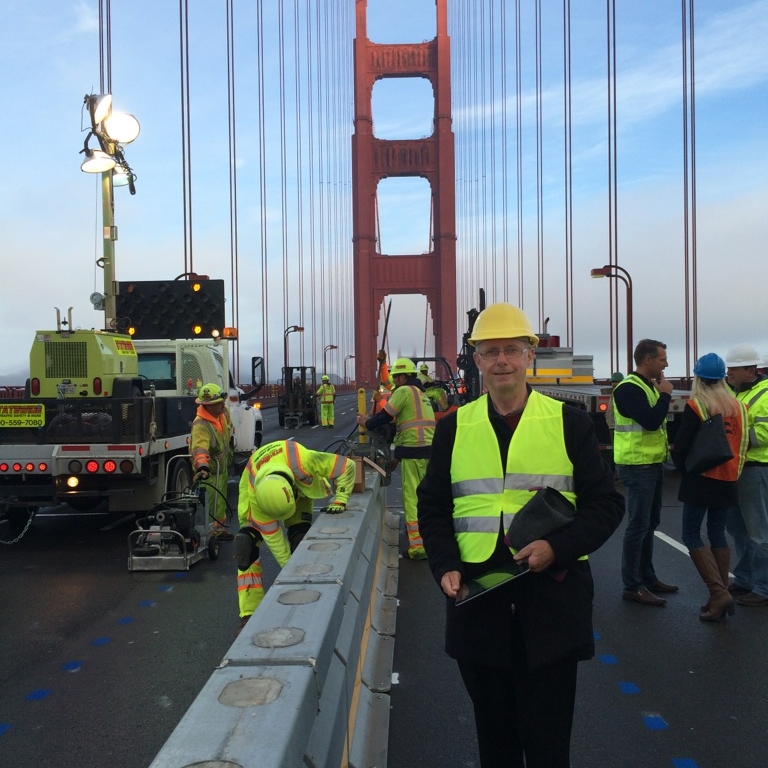Constructed in the 1930s and first opened to traffic in 1937, the Golden Gate Bridge has coped extremely well with the years. Soundly engineered, it has withstood earthquakes as well as a massive increase in vehicle traffic volumes. The bridge currently carries some 110,000 vehicles per day, with that volume projected to rise to 138,000 vehicles per day by 2038. Maximising the capacity of the bridge, which carries heavier commuter traffic flows into San Francisco in the morning, and greater volumes out of the city in the evening, was seen as vital. Also crucial was the need to improve safety for vehicle occupants using the bridge, due to the lack of a centre lane dividing barrier.
With teams of contractors and bridge staff working over the weekend, and every step carefully planned and implemented, the installation went like clockwork and the bridge opened hours ahead of the scheduled 4am deadline. Thousands of cyclists and pedestrians turned out to view the progress of the installation from the bridge’s sidewalks, which remained open throughout.




